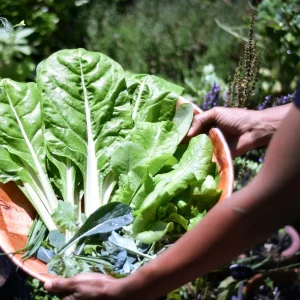Living off the grid offers a sense of freedom and self-sufficiency, but it also comes with unique challenges, particularly when it comes to cooking. In this guide, we’ll delve into sustainable kitchen solutions tailored for off-grid living, helping you embrace a greener lifestyle without sacrificing culinary creativity.
Facts
- Off-grid cooking eliminates reliance on traditional electricity and gas-powered appliances, reducing carbon footprint and energy consumption.
- Sustainable cooking methods contribute to environmental conservation by minimizing waste and utilizing renewable resources.
- Off-grid cooking encourages self-reliance and resilience in the face of emergencies or disruptions to conventional utilities.
| Cooking Method | Nutritional Benefits |
| Solar Cooking | Preserves vitamins and minerals in food |
| Rocket Stove | Efficient fuel consumption, reduces smoke |
| Biomass Stove | Utilizes organic waste as fuel |
| Clay Oven | Retains moisture, enhances flavor |
| Dutch Oven | Even heat distribution for thorough cooking |
| Rocket Mass Heater | Provides warmth while cooking, energy-efficient |
| Wood-Fired Grill | Adds smoky flavor to dishes, reduces carbon footprint |
7 Off-Grid Cooking Methods
1. Solar Cooking
Harness the power of the sun with solar cookers, which use reflective panels to concentrate sunlight and cook food. From simple box cookers to advanced parabolic designs, solar cooking is an eco-friendly option that requires minimal maintenance and no fuel costs.
2. Rocket Stove
A compact and efficient cooking device, the rocket stove burns wood or biomass at high temperatures, reducing fuel consumption and emissions. Its innovative design ensures thorough combustion, making it ideal for off-grid kitchens.
3. Biomass Stove
Convert agricultural waste, wood pellets, or even dried dung into energy with biomass stoves. These stoves utilize organic materials as fuel, offering a sustainable alternative to traditional cooking methods.
4. Clay Oven
Experience the ancient art of clay oven cooking, where food is baked or roasted in a wood-fired chamber. Clay ovens retain heat exceptionally well, resulting in tender and flavorful dishes with minimal energy input.
5. Dutch Oven
A versatile cast iron pot with a tight-fitting lid, the Dutch oven is a staple in off-grid kitchens. Its thick walls and even heat distribution make it perfect for baking, stewing, and slow cooking over open flames or coals.
6. Rocket Mass Heater
Combine heating and cooking with a rocket mass heater, which channels heat from a wood-burning stove through a thermal mass, such as cob or masonry. This innovative system provides warmth for your home while simultaneously cooking meals.
7. Wood-Fired Grill
Embrace the primal pleasure of outdoor cooking with a wood-fired grill. Grilling over open flames not only imparts a smoky flavor to your food but also reduces reliance on fossil fuels, making it a sustainable choice for off-grid living.
Conclusion
Off-grid cooking isn’t just about survival—it’s about thriving in harmony with nature. By adopting sustainable kitchen solutions, you can reduce your environmental impact while enjoying delicious meals cooked with ingenuity and resourcefulness. Whether you’re baking bread in a clay oven or grilling vegetables over an open fire, every meal becomes a celebration of self-sufficiency and ecological stewardship.
FAQ
Is off-grid cooking difficult?
While it requires some adjustment, off-grid cooking can be enjoyable and rewarding with the right tools and techniques.
Are off-grid cooking methods safe?
When used properly, off-grid cooking methods are safe and reliable. However, it’s essential to follow instructions and practice caution, especially when dealing with open flames or hot surfaces.
Can I still enjoy my favorite recipes off the grid?
Absolutely! Off-grid cooking offers a chance to get creative with your culinary repertoire, whether you’re adapting recipes for solar cooking or experimenting with wood-fired flavors.




